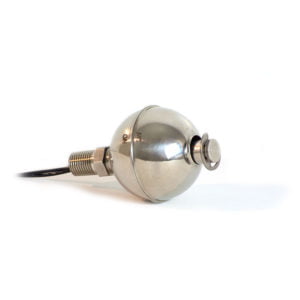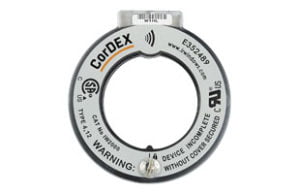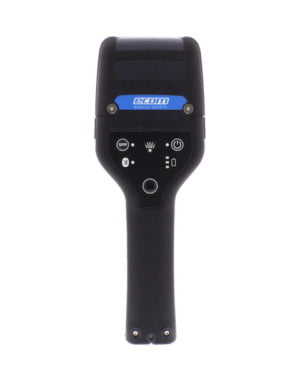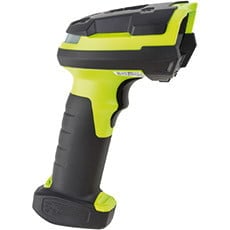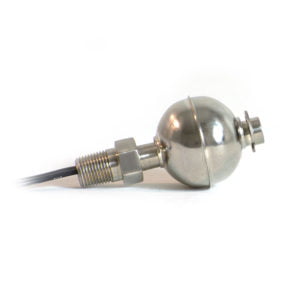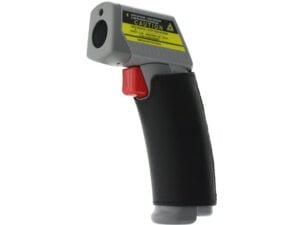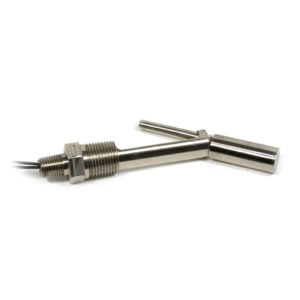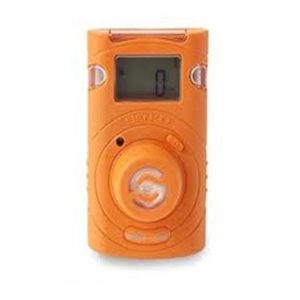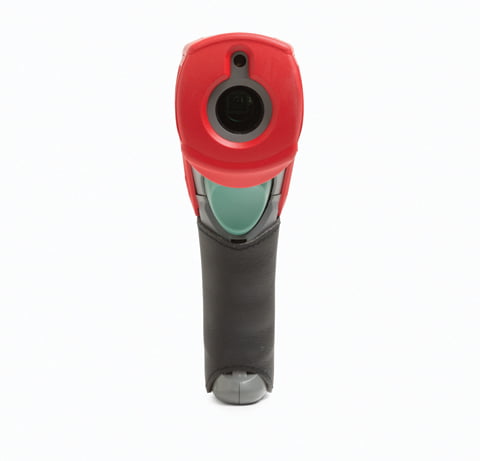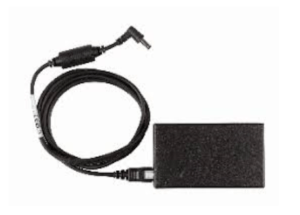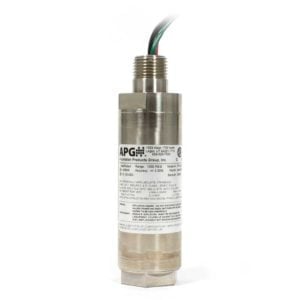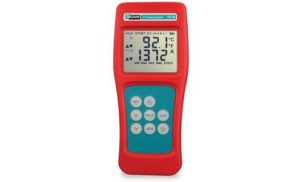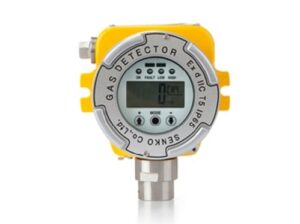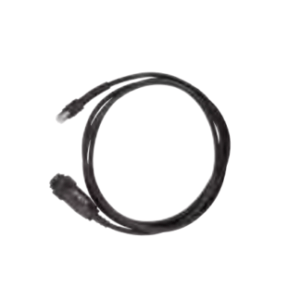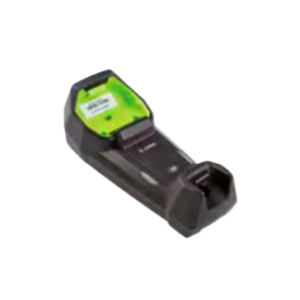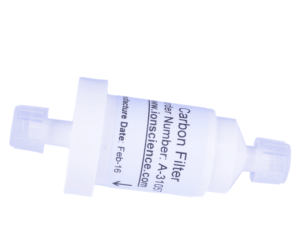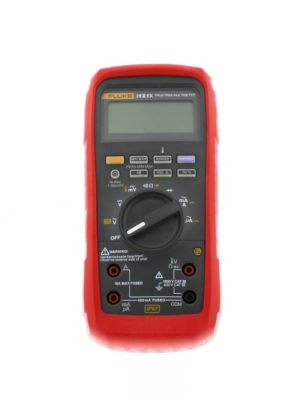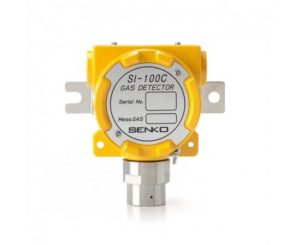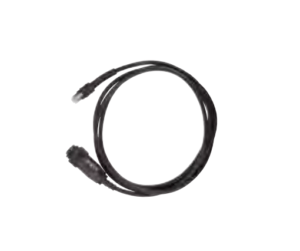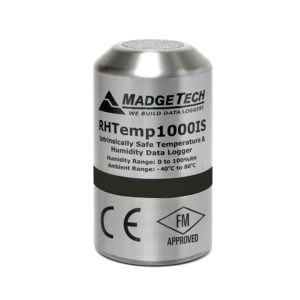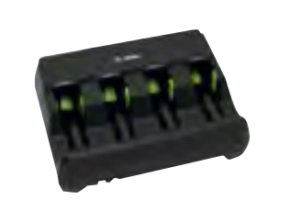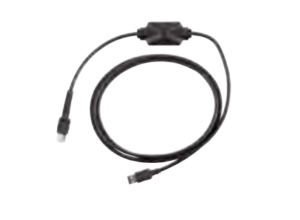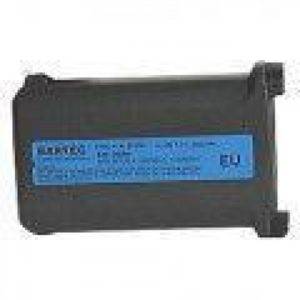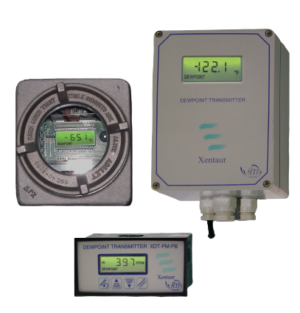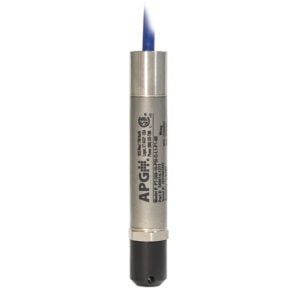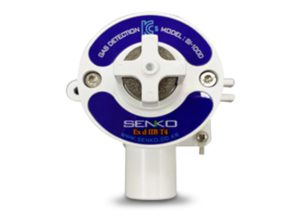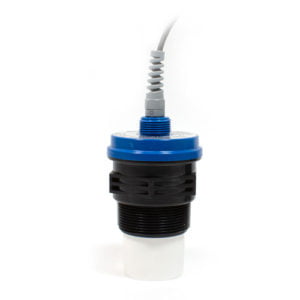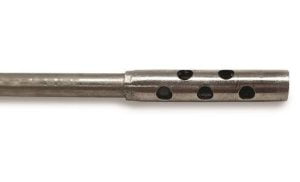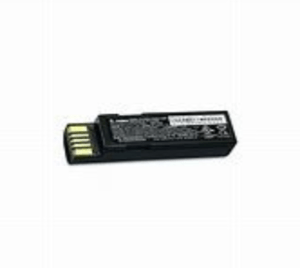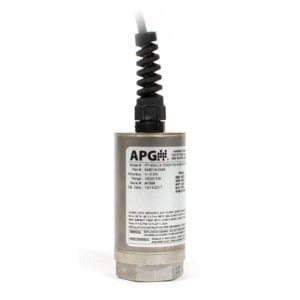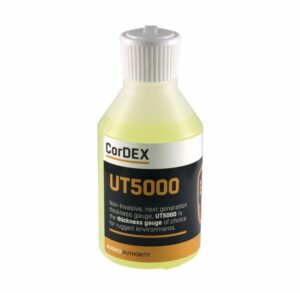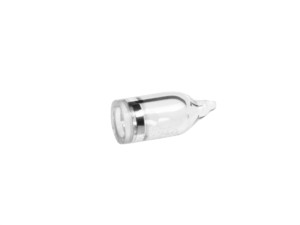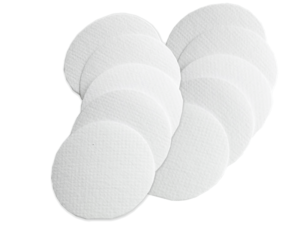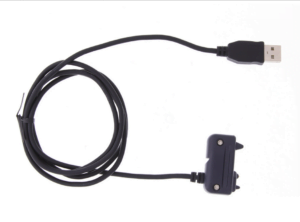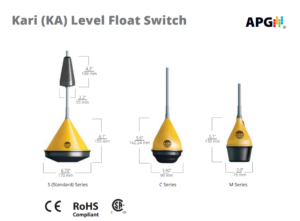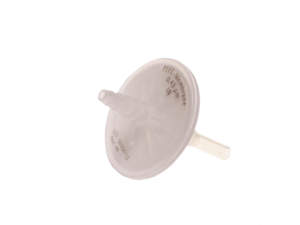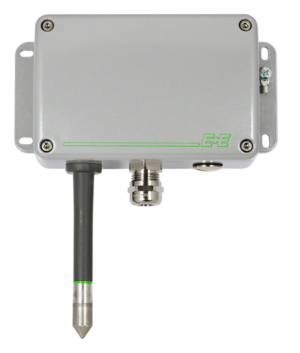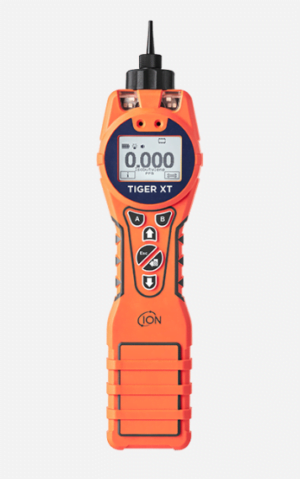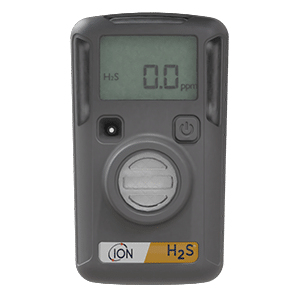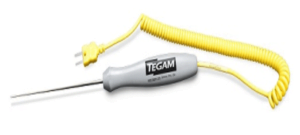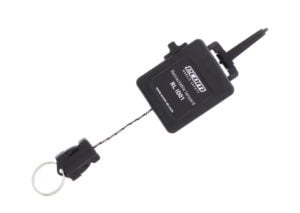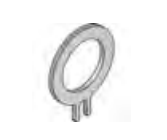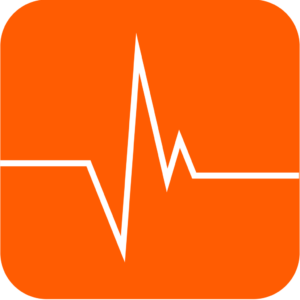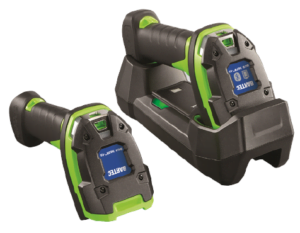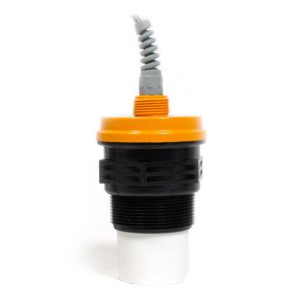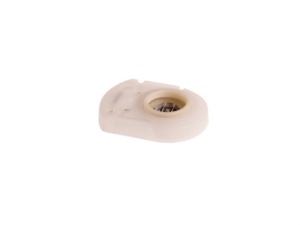Measurement & Calibration
We offer a complete range of products for use in the measurement and calibration of temperature, pressure, flow, level, and humidity. These products are designed with you in mind. To make your job easier and safer, they feature rugged construction designed to withstand harsh conditions. Our products include pressure sensors, temperature sensors, flow and level instruments, thermocouples, and infrared radiometers for BTU measurements. Critical to the safe and efficient operation of any plant, measurement and calibration are a task that should not be overlooked. It is the only way you can be confident that your instruments are providing reliable data, that control loops are performing as intended, and that quality processes are being followed wherever they occur.
Showing 1–48 of 246 results
-
%27%20fill-opacity%3D%27.5%27%3E%3Cellipse%20fill%3D%22%23b6b6b6%22%20fill-opacity%3D%22.5%22%20rx%3D%221%22%20ry%3D%221%22%20transform%3D%22rotate(-96.9%20137.8%2017.7)%20scale(59.81378%2096.30921)%22%2F%3E%3Cellipse%20fill%3D%22%23adadad%22%20fill-opacity%3D%22.5%22%20rx%3D%221%22%20ry%3D%221%22%20transform%3D%22rotate(166.4%2061.7%2085.1)%20scale(53.44461%2035.87665)%22%2F%3E%3Cellipse%20fill%3D%22%23fff%22%20fill-opacity%3D%22.5%22%20rx%3D%221%22%20ry%3D%221%22%20transform%3D%22matrix(58.45834%20-3.28023%2016.7416%20298.35879%20249.2%20112)%22%2F%3E%3Cpath%20fill%3D%22%23fff%22%20fill-opacity%3D%22.5%22%20d%3D%22M-4.1%20153L-7.6-18.3%20318.2%203z%22%2F%3E%3C%2Fg%3E%3C%2Fsvg%3E)
APG FS-400 Stainless Steel Vertical Float Switch
$6700Price Depends on product optionMake a selection to update price -
%22%20transform%3D%22translate(.6%20.6)%20scale(1.17188)%22%20fill-opacity%3D%22.5%22%3E%3Cellipse%20fill%3D%22%23bbb%22%20rx%3D%221%22%20ry%3D%221%22%20transform%3D%22matrix(10.33263%2089.30234%20-44.86228%205.19074%20114.4%2097.2)%22%2F%3E%3Cellipse%20fill%3D%22%23fff%22%20cx%3D%22235%22%20cy%3D%2282%22%20rx%3D%2238%22%20ry%3D%22255%22%2F%3E%3Cellipse%20fill%3D%22%23fff%22%20cx%3D%2220%22%20cy%3D%2270%22%20rx%3D%2228%22%20ry%3D%22255%22%2F%3E%3Cellipse%20fill%3D%22%23eaeaea%22%20rx%3D%221%22%20ry%3D%221%22%20transform%3D%22matrix(-13.91303%20-37.92125%2040.78953%20-14.96538%20134.1%2082.2)%22%2F%3E%3C%2Fg%3E%3C%2Fsvg%3E)
CorDEX IW SMART Infrared Inspection Window
$21280Price Depends on product optionMake a selection to update price -
%22%20transform%3D%22translate(.7%20.7)%20scale(1.4375)%22%20fill-opacity%3D%22.5%22%3E%3Cellipse%20fill%3D%22%231e1e1e%22%20rx%3D%221%22%20ry%3D%221%22%20transform%3D%22rotate(-90.2%20103%203)%20scale(98.53756%2033.80849)%22%2F%3E%3Cellipse%20fill%3D%22%23fff%22%20cx%3D%22207%22%20cy%3D%22168%22%20rx%3D%2292%22%20ry%3D%2292%22%2F%3E%3Cellipse%20fill%3D%22%23fff%22%20rx%3D%221%22%20ry%3D%221%22%20transform%3D%22matrix(45.61432%20-6.73574%2027.7806%20188.12981%2013.2%20133)%22%2F%3E%3Cellipse%20fill%3D%22%234d4d4d%22%20rx%3D%221%22%20ry%3D%221%22%20transform%3D%22matrix(-2.25803%20-47.27954%2046.57269%20-2.22427%20101%2075.2)%22%2F%3E%3C%2Fg%3E%3C%2Fsvg%3E)
Ecom Ident-Ex 01 Barcode Scanner/RFID Reader
$2,67720Price Depends on product optionMake a selection to update price -
%22%20transform%3D%22translate(.5%20.5)%22%20fill-opacity%3D%22.5%22%3E%3Cellipse%20fill%3D%22%23575e2d%22%20rx%3D%221%22%20ry%3D%221%22%20transform%3D%22matrix(36.08543%2013.64801%20-81.01047%20214.19221%20126.7%2039.8)%22%2F%3E%3Cellipse%20fill%3D%22%23fff%22%20cx%3D%22201%22%20cy%3D%22160%22%20rx%3D%2298%22%20ry%3D%2298%22%2F%3E%3Cellipse%20fill%3D%22%23fff%22%20rx%3D%221%22%20ry%3D%221%22%20transform%3D%22matrix(40.96279%20-217.32277%2035.8035%206.74854%2013%2095.1)%22%2F%3E%3Cellipse%20fill%3D%22%23768141%22%20rx%3D%221%22%20ry%3D%221%22%20transform%3D%22matrix(22.79128%2033.0415%20-43.04541%2029.69175%20144%2044)%22%2F%3E%3C%2Fg%3E%3C%2Fsvg%3E)
Bartec Handheld Barcode Scanner BCS 3600
$2,32500Price Depends on product optionMake a selection to update price -
%22%20transform%3D%22translate(.6%20.6)%20scale(1.17188)%22%20fill-opacity%3D%22.5%22%3E%3Cellipse%20fill%3D%22%239a9a9a%22%20rx%3D%221%22%20ry%3D%221%22%20transform%3D%22matrix(70.53862%20-22.10546%2010.97132%2035.00951%20136.8%20123.3)%22%2F%3E%3Cellipse%20fill%3D%22%23fff%22%20cx%3D%2270%22%20cy%3D%2235%22%20rx%3D%2286%22%20ry%3D%2286%22%2F%3E%3Cellipse%20fill%3D%22%23c4c4c4%22%20rx%3D%221%22%20ry%3D%221%22%20transform%3D%22rotate(-95.2%20133.5%20-16.4)%20scale(51.84872%2067.45238)%22%2F%3E%3Cellipse%20fill%3D%22%23fff%22%20cx%3D%22196%22%20cy%3D%22255%22%20rx%3D%2299%22%20ry%3D%2299%22%2F%3E%3C%2Fg%3E%3C%2Fsvg%3E)
APG FS-410 Explosion Proof Miniature Stainless Steel Vertical Float Switch
$7000Price Depends on product optionMake a selection to update price -
%27%20fill-opacity%3D%27.5%27%3E%3Cellipse%20fill%3D%22%23333%22%20fill-opacity%3D%22.5%22%20rx%3D%221%22%20ry%3D%221%22%20transform%3D%22matrix(37.55455%20143.14943%20-39.57634%2010.38266%20163.8%20114)%22%2F%3E%3Cellipse%20fill%3D%22%23fff%22%20fill-opacity%3D%22.5%22%20rx%3D%221%22%20ry%3D%221%22%20transform%3D%22rotate(158.5%20.5%2056.8)%20scale(78.32533%20216.26029)%22%2F%3E%3Cellipse%20fill%3D%22%23fff%22%20fill-opacity%3D%22.5%22%20rx%3D%221%22%20ry%3D%221%22%20transform%3D%22matrix(49.53145%20-9.18011%2054.4571%20293.82423%20267.6%2068.8)%22%2F%3E%3Cellipse%20fill%3D%22%23484848%22%20fill-opacity%3D%22.5%22%20rx%3D%221%22%20ry%3D%221%22%20transform%3D%22matrix(23.43687%20-5.58345%2016.09236%2067.54864%20171.7%20130.3)%22%2F%3E%3C%2Fg%3E%3C%2Fsvg%3E)
Ecom Ex-MP4 a Infrared Thermometer
$65500 -
%22%20transform%3D%22translate(.6%20.6)%20scale(1.17188)%22%20fill-opacity%3D%22.5%22%3E%3Cellipse%20fill%3D%22silver%22%20rx%3D%221%22%20ry%3D%221%22%20transform%3D%22rotate(-4.4%201722.1%20-1561.8)%20scale(121.23512%2041.49744)%22%2F%3E%3Cellipse%20fill%3D%22%23acacac%22%20rx%3D%221%22%20ry%3D%221%22%20transform%3D%22matrix(-1.75648%20-16.48199%2054.68293%20-5.82753%2092.9%20133.4)%22%2F%3E%3Cellipse%20fill%3D%22%23fff%22%20rx%3D%221%22%20ry%3D%221%22%20transform%3D%22matrix(3.85428%2056.53667%20-218.10586%2014.86897%20156.2%20220.4)%22%2F%3E%3Cellipse%20fill%3D%22%23fff%22%20cx%3D%22118%22%20cy%3D%2238%22%20rx%3D%22255%22%20ry%3D%2251%22%2F%3E%3C%2Fg%3E%3C%2Fsvg%3E)
APG FS-500 Explosion Proof Stainless Steel Horizontal Float Switch
$27530Price Depends on product optionMake a selection to update price -
%22%20transform%3D%22translate(.6%20.6)%20scale(1.17188)%22%20fill-opacity%3D%22.5%22%3E%3Cellipse%20fill%3D%22%23c3520c%22%20rx%3D%221%22%20ry%3D%221%22%20transform%3D%22matrix(-.52253%20106.48691%20-53.3532%20-.2618%20125.3%20119.2)%22%2F%3E%3Cellipse%20fill%3D%22%23fff%22%20cx%3D%22222%22%20cy%3D%22152%22%20rx%3D%2246%22%20ry%3D%22255%22%2F%3E%3Cellipse%20fill%3D%22%23fff%22%20rx%3D%221%22%20ry%3D%221%22%20transform%3D%22matrix(-37.13142%20.36088%20-2.4782%20-254.98796%2025%20138.7)%22%2F%3E%3Cellipse%20fill%3D%22%23955529%22%20rx%3D%221%22%20ry%3D%221%22%20transform%3D%22matrix(29.1563%20-1.12007%201.60906%2041.88493%20122.5%2077)%22%2F%3E%3C%2Fg%3E%3C%2Fsvg%3E)
SENKO SGT Portable Gas Detector
$38234Price Depends on product optionMake a selection to update price -
%22%20transform%3D%22translate(.6%20.6)%20scale(1.17188)%22%20fill-opacity%3D%22.5%22%3E%3Cellipse%20fill%3D%22%238d5468%22%20rx%3D%221%22%20ry%3D%221%22%20transform%3D%22rotate(-179.5%2061.9%2049.3)%20scale(35.58755%20113.92541)%22%2F%3E%3Cellipse%20fill%3D%22%23fff%22%20cx%3D%22236%22%20cy%3D%22186%22%20rx%3D%2263%22%20ry%3D%22255%22%2F%3E%3Cellipse%20fill%3D%22%23fff%22%20cy%3D%22146%22%20rx%3D%22102%22%20ry%3D%22102%22%2F%3E%3Cellipse%20fill%3D%22%23c96788%22%20rx%3D%221%22%20ry%3D%221%22%20transform%3D%22matrix(-1.2512%20-38.8079%2047.82524%20-1.54193%20124.2%2057.8)%22%2F%3E%3C%2Fg%3E%3C%2Fsvg%3E)
Ecom Fluke 568 EX – ATEX IR Temperature Meter
$2,24000 -
%27%20fill-opacity%3D%27.5%27%3E%3Cellipse%20fill%3D%22%233c3c3c%22%20fill-opacity%3D%22.5%22%20rx%3D%221%22%20ry%3D%221%22%20transform%3D%22rotate(-177.2%20100.3%2073.1)%20scale(69.89595%2040.10016)%22%2F%3E%3Cpath%20fill%3D%22%23fff%22%20fill-opacity%3D%22.5%22%20d%3D%22M299.4%20123.6l11.7-141.8L-18.2.6z%22%2F%3E%3Cellipse%20fill%3D%22%23fff%22%20fill-opacity%3D%22.5%22%20rx%3D%221%22%20ry%3D%221%22%20transform%3D%22matrix(-43.7654%206.90882%20-46.59612%20-295.17292%20.6%20152.6)%22%2F%3E%3Cellipse%20fill%3D%22%23fff%22%20fill-opacity%3D%22.5%22%20rx%3D%221%22%20ry%3D%221%22%20transform%3D%22matrix(-21.12968%2050.02078%20-102.57908%20-43.33125%20241.7%2037.5)%22%2F%3E%3C%2Fg%3E%3C%2Fsvg%3E)
Bartec Power Supply with DC Connecting Cable
$11252 -
%22%20transform%3D%22translate(.6%20.6)%20scale(1.17188)%22%20fill-opacity%3D%22.5%22%3E%3Cellipse%20fill%3D%22%238d8d8d%22%20rx%3D%221%22%20ry%3D%221%22%20transform%3D%22matrix(31.827%201.32524%20-2.18478%2052.46968%20125%20100.9)%22%2F%3E%3Cellipse%20fill%3D%22%23ccc%22%20cx%3D%22123%22%20cy%3D%22195%22%20rx%3D%2241%22%20ry%3D%2285%22%2F%3E%3Cellipse%20fill%3D%22%23cecece%22%20rx%3D%221%22%20ry%3D%221%22%20transform%3D%22matrix(14.80795%2015.26151%20-31.68645%2030.74474%20115.7%2048.8)%22%2F%3E%3Cpath%20fill%3D%22%23fff%22%20d%3D%22M271%202l-27%20269L140-16z%22%2F%3E%3C%2Fg%3E%3C%2Fsvg%3E)
APG PT-405 Explosion Proof Heavy Duty Pressure Transducer
$54810Price Depends on product optionMake a selection to update price -
%22%20transform%3D%22translate(.6%20.6)%20scale(1.17188)%22%20fill-opacity%3D%22.5%22%3E%3Cellipse%20fill%3D%22%239c6175%22%20rx%3D%221%22%20ry%3D%221%22%20transform%3D%22rotate(-177%2063.8%2030.8)%20scale(36.37682%20163.5218)%22%2F%3E%3Cellipse%20fill%3D%22%23fff%22%20cx%3D%22231%22%20cy%3D%22122%22%20rx%3D%2254%22%20ry%3D%22222%22%2F%3E%3Cellipse%20fill%3D%22%23fff%22%20cx%3D%2233%22%20cy%3D%2274%22%20rx%3D%2236%22%20ry%3D%22244%22%2F%3E%3Cellipse%20fill%3D%22%23fff%22%20cx%3D%22255%22%20cy%3D%2280%22%20rx%3D%2283%22%20ry%3D%2283%22%2F%3E%3C%2Fg%3E%3C%2Fsvg%3E)
Intrinsically Safe Thermocouple Thermometer Tegam 921B
$77550 -
%22%20transform%3D%22translate(.6%20.6)%20scale(1.17188)%22%20fill-opacity%3D%22.5%22%3E%3Cellipse%20fill%3D%22%23737370%22%20rx%3D%221%22%20ry%3D%221%22%20transform%3D%22rotate(-7.5%20623.3%20-951.3)%20scale(55.3271%2059.77227)%22%2F%3E%3Cellipse%20fill%3D%22%23fff%22%20rx%3D%221%22%20ry%3D%221%22%20transform%3D%22rotate(-168%20118.4%2036.3)%20scale(51.04617%20254.99999)%22%2F%3E%3Cellipse%20fill%3D%22%23fff%22%20cx%3D%2218%22%20cy%3D%22190%22%20rx%3D%2262%22%20ry%3D%22223%22%2F%3E%3Cellipse%20fill%3D%22%23626264%22%20rx%3D%221%22%20ry%3D%221%22%20transform%3D%22matrix(11.70168%20-20.1642%2020.61778%2011.9649%20126%2073)%22%2F%3E%3C%2Fg%3E%3C%2Fsvg%3E)
SENKO SI-100 Fixed Gas Detector
$69300Price Depends on product optionMake a selection to update price -
%22%20transform%3D%22translate(.6%20.6)%20scale(1.17188)%22%20fill-opacity%3D%22.5%22%3E%3Cellipse%20fill%3D%22%23cdcdcd%22%20cx%3D%22122%22%20cy%3D%22128%22%20rx%3D%2293%22%20ry%3D%2293%22%2F%3E%3Cellipse%20fill%3D%22%23a7a7a7%22%20rx%3D%221%22%20ry%3D%221%22%20transform%3D%22matrix(-25.54496%20-23.0934%2014.15174%20-15.65406%2076.5%20164.1)%22%2F%3E%3Cellipse%20fill%3D%22%23fff%22%20rx%3D%221%22%20ry%3D%221%22%20transform%3D%22rotate(95.8%2058.2%2070)%20scale(34.44547%20255.00001)%22%2F%3E%3Cellipse%20fill%3D%22%23fff%22%20cx%3D%22255%22%20cy%3D%22255%22%20rx%3D%22106%22%20ry%3D%22106%22%2F%3E%3C%2Fg%3E%3C%2Fsvg%3E)
Bartec Handheld Scanner 3600 Connecting Cable
$10500Price Depends on product optionMake a selection to update price -
%22%20transform%3D%22translate(.6%20.6)%20scale(1.17188)%22%20fill-opacity%3D%22.5%22%3E%3Cellipse%20fill%3D%22%23444736%22%20rx%3D%221%22%20ry%3D%221%22%20transform%3D%22matrix(-25.18224%2032.42468%20-63.32066%20-49.17723%20126.8%20136)%22%2F%3E%3Cellipse%20fill%3D%22%23fff%22%20rx%3D%221%22%20ry%3D%221%22%20transform%3D%22rotate(-144.9%2096.8%20-5.6)%20scale(220.20385%2072.77582)%22%2F%3E%3Cellipse%20fill%3D%22%23fff%22%20cx%3D%2233%22%20cy%3D%22239%22%20rx%3D%2291%22%20ry%3D%2291%22%2F%3E%3Cpath%20fill%3D%22%23acb28c%22%20d%3D%22M92%2057L32%2085l197%2063z%22%2F%3E%3C%2Fg%3E%3C%2Fsvg%3E)
Bartec 3600 Handheld Barcode Scanner Base Station
$49500 -
%22%20transform%3D%22translate(.6%20.6)%20scale(1.17188)%22%20fill-opacity%3D%22.5%22%3E%3Cellipse%20fill%3D%22%23cbcbcb%22%20rx%3D%221%22%20ry%3D%221%22%20transform%3D%22matrix(64.5473%205.53405%20-4.0803%2047.5913%20124%20118.8)%22%2F%3E%3Cellipse%20fill%3D%22%23fff%22%20cx%3D%22120%22%20cy%3D%2231%22%20rx%3D%22255%22%20ry%3D%2238%22%2F%3E%3Cellipse%20fill%3D%22%23fff%22%20rx%3D%221%22%20ry%3D%221%22%20transform%3D%22matrix(-34.093%2017.1944%20-51.524%20-102.16165%2033.6%20148.6)%22%2F%3E%3Cellipse%20fill%3D%22%23fff%22%20rx%3D%221%22%20ry%3D%221%22%20transform%3D%22matrix(-40.76813%20-248.24825%2041.68228%20-6.8452%20221.1%2036.6)%22%2F%3E%3C%2Fg%3E%3C%2Fsvg%3E)
Ion Science Tiger – Carbon Filter
$9722 -
%22%20transform%3D%22translate(.8%20.8)%20scale(1.57031)%22%20fill-opacity%3D%22.5%22%3E%3Cellipse%20fill%3D%22%231e0911%22%20rx%3D%221%22%20ry%3D%221%22%20transform%3D%22matrix(41.77373%20-.57133%201.2114%2088.5739%2094.7%20130)%22%2F%3E%3Cellipse%20fill%3D%22%23fff%22%20cx%3D%22170%22%20cy%3D%22118%22%20rx%3D%2229%22%20ry%3D%22190%22%2F%3E%3Cellipse%20fill%3D%22%23fff%22%20rx%3D%221%22%20ry%3D%221%22%20transform%3D%22matrix(-28.75222%20-1.1548%207.62504%20-189.84692%2016%20129.1)%22%2F%3E%3Cellipse%20fill%3D%22%23fff%22%20rx%3D%221%22%20ry%3D%221%22%20transform%3D%22matrix(-2.8232%20-31.49935%20173.32069%20-15.5342%2094.2%20242)%22%2F%3E%3C%2Fg%3E%3C%2Fsvg%3E)
Ecom Fluke 28 II EX Multimeter
$2,45000 -
%22%20transform%3D%22translate(.6%20.6)%20scale(1.17188)%22%20fill-opacity%3D%22.5%22%3E%3Cellipse%20fill%3D%22%23abbd4d%22%20rx%3D%221%22%20ry%3D%221%22%20transform%3D%22matrix(-18.46774%2061.9488%20-53.70754%20-16.01091%20121%2077.4)%22%2F%3E%3Cellipse%20fill%3D%22%23fff%22%20rx%3D%221%22%20ry%3D%221%22%20transform%3D%22matrix(-56.8417%20248.58403%20-49.69066%20-11.36236%20219.3%20141)%22%2F%3E%3Cellipse%20fill%3D%22%23fff%22%20rx%3D%221%22%20ry%3D%221%22%20transform%3D%22rotate(162.4%201.5%2062.8)%20scale(57.02586%20255.00001)%22%2F%3E%3Cellipse%20fill%3D%22%23b4bf79%22%20cx%3D%22124%22%20cy%3D%2283%22%20rx%3D%2243%22%20ry%3D%2243%22%2F%3E%3C%2Fg%3E%3C%2Fsvg%3E)
SENKO SI-100C Fixed Gas Detector
$45344Price Depends on product optionMake a selection to update price -
%22%20transform%3D%22translate(.6%20.6)%20scale(1.17188)%22%20fill-opacity%3D%22.5%22%3E%3Cellipse%20fill%3D%22%23cdcdcd%22%20rx%3D%221%22%20ry%3D%221%22%20transform%3D%22matrix(-24.35472%20-71.29487%2077.50153%20-26.47495%20121.2%20108.4)%22%2F%3E%3Cellipse%20fill%3D%22%23fff%22%20cx%3D%22231%22%20cy%3D%22111%22%20rx%3D%2234%22%20ry%3D%22255%22%2F%3E%3Cellipse%20fill%3D%22%23fff%22%20rx%3D%221%22%20ry%3D%221%22%20transform%3D%22matrix(17.94618%20-238.092%2031.38981%202.366%2018%2066)%22%2F%3E%3Cellipse%20fill%3D%22%23fff%22%20cx%3D%22167%22%20cy%3D%2210%22%20rx%3D%22253%22%20ry%3D%2225%22%2F%3E%3C%2Fg%3E%3C%2Fsvg%3E)
Bartec 3600 Connection Cable
$17500Price Depends on product optionMake a selection to update price -
%22%20transform%3D%22translate(.6%20.6)%20scale(1.17188)%22%20fill-opacity%3D%22.5%22%3E%3Cellipse%20fill%3D%22%23595959%22%20rx%3D%221%22%20ry%3D%221%22%20transform%3D%22matrix(50.19034%20-1.96057%203.2934%2084.3108%20125.1%20133)%22%2F%3E%3Cellipse%20fill%3D%22%23fff%22%20rx%3D%221%22%20ry%3D%221%22%20transform%3D%22matrix(.29806%20252.67153%20-40.20566%20.04743%20223.8%20108.2)%22%2F%3E%3Cellipse%20fill%3D%22%23fff%22%20cx%3D%2226%22%20cy%3D%22114%22%20rx%3D%2242%22%20ry%3D%22255%22%2F%3E%3Cellipse%20fill%3D%22%23a2a2a2%22%20rx%3D%221%22%20ry%3D%221%22%20transform%3D%22matrix(62.08088%20-3.14488%205.18905%20102.43341%20125%20124.6)%22%2F%3E%3C%2Fg%3E%3C%2Fsvg%3E)
MadgeTech RHTEMP1000IS Humidity and Temperature Data Logger
$49575Price Depends on product optionMake a selection to update price -
%22%20transform%3D%22translate(.6%20.6)%20scale(1.17188)%22%20fill-opacity%3D%22.5%22%3E%3Cellipse%20rx%3D%221%22%20ry%3D%221%22%20transform%3D%22rotate(82.1%205.4%20109.8)%20scale(54.96861%2079.52424)%22%2F%3E%3Cellipse%20fill%3D%22%23fff%22%20rx%3D%221%22%20ry%3D%221%22%20transform%3D%22matrix(-42.92865%20-5.73536%2033.60125%20-251.50235%20223.6%20115.2)%22%2F%3E%3Cellipse%20fill%3D%22%23fff%22%20cx%3D%2294%22%20cy%3D%22174%22%20rx%3D%22255%22%20ry%3D%2219%22%2F%3E%3Cpath%20fill%3D%22%23fff%22%20d%3D%22M254.3%2010L.7%2036.7l-5-46.7%20253.6-26.7z%22%2F%3E%3C%2Fg%3E%3C%2Fsvg%3E)
Bartec 3600 Handheld Scanner 4-slot Battery Charging Station
$45500 -
%22%20transform%3D%22translate(.6%20.6)%20scale(1.17188)%22%20fill-opacity%3D%22.5%22%3E%3Cellipse%20fill%3D%22%23cecece%22%20rx%3D%221%22%20ry%3D%221%22%20transform%3D%22matrix(-29.13177%2078.33296%20-69.8254%20-25.96783%20128.9%2079.2)%22%2F%3E%3Cellipse%20fill%3D%22%23fff%22%20cx%3D%22239%22%20cy%3D%2287%22%20rx%3D%2242%22%20ry%3D%22255%22%2F%3E%3Cellipse%20fill%3D%22%23fff%22%20rx%3D%221%22%20ry%3D%221%22%20transform%3D%22matrix(22.22907%20249.0719%20-30.65073%202.7355%2020.3%2090)%22%2F%3E%3Cellipse%20fill%3D%22%23ababab%22%20rx%3D%221%22%20ry%3D%221%22%20transform%3D%22matrix(6.51541%2015.17438%20-18.47327%207.93186%20133.2%2032.6)%22%2F%3E%3C%2Fg%3E%3C%2Fsvg%3E)
Bartec Handheld Scanner AC Power Cable
$2057Price Depends on product optionMake a selection to update price -
%27%20fill-opacity%3D%27.5%27%3E%3Cellipse%20fill%3D%22%231a2f43%22%20fill-opacity%3D%22.5%22%20rx%3D%221%22%20ry%3D%221%22%20transform%3D%22matrix(145.14331%201.83853%20-.9109%2071.91116%20129.1%20147.3)%22%2F%3E%3Cellipse%20fill%3D%22%23fff%22%20fill-opacity%3D%22.5%22%20rx%3D%221%22%20ry%3D%221%22%20transform%3D%22matrix(-.13968%20-40.01605%20298.8263%20-1.0431%20148.7%20276.6)%22%2F%3E%3Cellipse%20fill%3D%22%23fff%22%20fill-opacity%3D%22.5%22%20rx%3D%221%22%20ry%3D%221%22%20transform%3D%22matrix(.5705%2036.19507%20-296.80503%204.67816%20149.6%2026.2)%22%2F%3E%3Cellipse%20fill%3D%22%23fff%22%20fill-opacity%3D%22.5%22%20rx%3D%221%22%20ry%3D%221%22%20transform%3D%22matrix(-274.3458%20-7.86827%20.81897%20-28.5552%20146%20283.9)%22%2F%3E%3C%2Fg%3E%3C%2Fsvg%3E)
Bartec MC92 – IS Battery
$45820Price Depends on product optionMake a selection to update price -
%22%20transform%3D%22translate(.6%20.6)%20scale(1.22266)%22%20fill-opacity%3D%22.5%22%3E%3Cellipse%20rx%3D%221%22%20ry%3D%221%22%20transform%3D%22matrix(78.77312%20-8.13175%204.58434%2044.409%20227.7%20228.8)%22%2F%3E%3Cellipse%20rx%3D%221%22%20ry%3D%221%22%20transform%3D%22matrix(-8.76616%2052.00649%20-78.84715%20-13.2904%2039.3%200)%22%2F%3E%3Cellipse%20fill%3D%22%239e9e9e%22%20cx%3D%22193%22%20cy%3D%2285%22%20rx%3D%2292%22%20ry%3D%2292%22%2F%3E%3Cellipse%20rx%3D%221%22%20ry%3D%221%22%20transform%3D%22matrix(-12.00064%20-52.73532%2039.7909%20-9.05497%2014%20227.9)%22%2F%3E%3C%2Fg%3E%3C%2Fsvg%3E)
COSA Xentaur Dew Point Transmitter XDT Series
$1,89500Price Depends on product optionMake a selection to update price -
%27%20fill-opacity%3D%27.5%27%3E%3Cellipse%20fill%3D%22%23989898%22%20fill-opacity%3D%22.5%22%20rx%3D%221%22%20ry%3D%221%22%20transform%3D%22matrix(-.5215%20-149.39667%2027.7165%20-.09675%20145.1%20208.8)%22%2F%3E%3Cellipse%20fill%3D%22%23fff%22%20fill-opacity%3D%22.5%22%20rx%3D%221%22%20ry%3D%221%22%20transform%3D%22matrix(-55.19413%20-1.83098%207.69142%20-231.85505%2040.8%20132.7)%22%2F%3E%3Cellipse%20fill%3D%22%23fff%22%20fill-opacity%3D%22.5%22%20rx%3D%221%22%20ry%3D%221%22%20transform%3D%22matrix(59.03978%20-1.3584%206.87366%20298.74906%20251.8%20141.3)%22%2F%3E%3Cellipse%20fill%3D%22%23ccc%22%20fill-opacity%3D%22.5%22%20rx%3D%221%22%20ry%3D%221%22%20transform%3D%22matrix(-48.17998%202.01934%20-3.55105%20-84.7255%20144.7%20101.4)%22%2F%3E%3C%2Fg%3E%3C%2Fsvg%3E)
APG PT-500-P1 Submersible Pressure Transducer
$68650Price Depends on product optionMake a selection to update price -
%27%20fill-opacity%3D%27.5%27%3E%3Cellipse%20fill%3D%22%2372717d%22%20fill-opacity%3D%22.5%22%20rx%3D%221%22%20ry%3D%221%22%20transform%3D%22matrix(-3.65132%20-90.91003%2067.8758%20-2.72617%20147.7%2079.3)%22%2F%3E%3Cellipse%20fill%3D%22%23fff%22%20fill-opacity%3D%22.5%22%20rx%3D%221%22%20ry%3D%221%22%20transform%3D%22matrix(53.54129%2010.31043%20-51.93298%20269.68415%20268.3%20119.8)%22%2F%3E%3Cellipse%20fill%3D%22%23fff%22%20fill-opacity%3D%22.5%22%20rx%3D%221%22%20ry%3D%221%22%20transform%3D%22matrix(-66.95447%2016.94209%20-73.30475%20-289.69754%2012.8%20130.4)%22%2F%3E%3Cellipse%20fill%3D%22%23666760%22%20fill-opacity%3D%22.5%22%20rx%3D%221%22%20ry%3D%221%22%20transform%3D%22matrix(-25.34906%20-10.47354%2010.01747%20-24.24524%20149.9%20111.5)%22%2F%3E%3C%2Fg%3E%3C%2Fsvg%3E)
SENKO SI-100D Gas Leak Detector
$16494Price Depends on product optionMake a selection to update price -
%27%20fill-opacity%3D%27.5%27%3E%3Cellipse%20fill%3D%22%23252526%22%20fill-opacity%3D%22.5%22%20rx%3D%221%22%20ry%3D%221%22%20transform%3D%22matrix(7.00061%20-67.84084%2048.51097%205.00593%20153%20176.6)%22%2F%3E%3Cellipse%20fill%3D%22%23fff%22%20fill-opacity%3D%22.5%22%20rx%3D%221%22%20ry%3D%221%22%20transform%3D%22rotate(-98.8%20207.8%20-60.6)%20scale(298.82813%2092.70809)%22%2F%3E%3Cellipse%20fill%3D%22%23383838%22%20fill-opacity%3D%22.5%22%20rx%3D%221%22%20ry%3D%221%22%20transform%3D%22matrix(29.877%20-.25785%20.30135%2034.91828%20149.1%20184)%22%2F%3E%3Cellipse%20fill%3D%22%23fff%22%20fill-opacity%3D%22.5%22%20rx%3D%221%22%20ry%3D%221%22%20transform%3D%22matrix(-54.87012%20293.74737%20-60.33819%20-11.27079%2043.8%2095.6)%22%2F%3E%3C%2Fg%3E%3C%2Fsvg%3E)
APG MNU IS Modbus Ultrasonic Level Sensor
$52506Price Depends on product optionMake a selection to update price -
%22%20transform%3D%22translate(.6%20.6)%20scale(1.17188)%22%20fill-opacity%3D%22.5%22%3E%3Cellipse%20fill%3D%22%23a7a7a7%22%20rx%3D%221%22%20ry%3D%221%22%20transform%3D%22rotate(91.4%2033.3%20102.1)%20scale(24.48665%20145.00339)%22%2F%3E%3Cellipse%20fill%3D%22%23fff%22%20rx%3D%221%22%20ry%3D%221%22%20transform%3D%22rotate(-85.5%20174%20-28.9)%20scale(32.58528%20255.00001)%22%2F%3E%3Cellipse%20fill%3D%22%23fff%22%20cx%3D%22128%22%20cy%3D%229%22%20rx%3D%22255%22%20ry%3D%2219%22%2F%3E%3Cellipse%20fill%3D%22%23fff%22%20cx%3D%22178%22%20cy%3D%22138%22%20rx%3D%22255%22%20ry%3D%2223%22%2F%3E%3C%2Fg%3E%3C%2Fsvg%3E)
Intrinsically Safe Air/Gas Temperature Probe Tegam IS9T606MTC06
$21850 -
%22%20transform%3D%22translate(.6%20.6)%20scale(1.17188)%22%20fill-opacity%3D%22.5%22%3E%3Cellipse%20fill%3D%22%236d6d6d%22%20rx%3D%221%22%20ry%3D%221%22%20transform%3D%22rotate(-3%202240.2%20-2348.9)%20scale(76.00557%2039.4245)%22%2F%3E%3Cellipse%20fill%3D%22%23fff%22%20cx%3D%22168%22%20cy%3D%22227%22%20rx%3D%2292%22%20ry%3D%2292%22%2F%3E%3Cellipse%20fill%3D%22%23fff%22%20cx%3D%22119%22%20cy%3D%2230%22%20rx%3D%22255%22%20ry%3D%2238%22%2F%3E%3Cellipse%20fill%3D%22%235e5e5e%22%20cx%3D%22122%22%20cy%3D%22112%22%20rx%3D%2242%22%20ry%3D%2211%22%2F%3E%3C%2Fg%3E%3C%2Fsvg%3E)
Bartec 3600 Battery
$32225 -
%22%20transform%3D%22translate(.6%20.6)%20scale(1.17188)%22%20fill-opacity%3D%22.5%22%3E%3Cellipse%20fill%3D%22%23999%22%20rx%3D%221%22%20ry%3D%221%22%20transform%3D%22rotate(-88.2%20124%20-1.4)%20scale(89.76323%2029.07822)%22%2F%3E%3Cellipse%20fill%3D%22%23fff%22%20rx%3D%221%22%20ry%3D%221%22%20transform%3D%22matrix(-52.95057%20-.55452%202.6149%20-249.69614%20222.6%20115.8)%22%2F%3E%3Cellipse%20fill%3D%22%23fff%22%20cx%3D%2232%22%20cy%3D%22136%22%20rx%3D%2243%22%20ry%3D%22255%22%2F%3E%3Cellipse%20fill%3D%22%23cbcbcb%22%20cx%3D%22121%22%20cy%3D%22142%22%20rx%3D%2252%22%20ry%3D%22136%22%2F%3E%3C%2Fg%3E%3C%2Fsvg%3E)
APG PT-400 Heavy Duty Pressure Transducer
$48962Price Depends on product optionMake a selection to update price -
%22%20transform%3D%22translate(.6%20.6)%20scale(1.17188)%22%20fill-opacity%3D%22.5%22%3E%3Cellipse%20fill%3D%22%2341433a%22%20rx%3D%221%22%20ry%3D%221%22%20transform%3D%22matrix(-47.04895%204.5303%20-5.84755%20-60.72914%20125.1%20164.4)%22%2F%3E%3Cellipse%20fill%3D%22%23fff%22%20cx%3D%22236%22%20cy%3D%2283%22%20rx%3D%2298%22%20ry%3D%2298%22%2F%3E%3Cellipse%20fill%3D%22%233e3d42%22%20rx%3D%221%22%20ry%3D%221%22%20transform%3D%22matrix(-24.69698%201.5908%20-1.80794%20-28.06797%20124.7%20171.8)%22%2F%3E%3Cellipse%20fill%3D%22%23fff%22%20rx%3D%221%22%20ry%3D%221%22%20transform%3D%22matrix(40.77939%20-250.70059%2046.19705%207.5145%2037.8%2067.2)%22%2F%3E%3C%2Fg%3E%3C%2Fsvg%3E)
CorDex Couplant Gel (2x125ml Bottles) – XP-560
$5000 -
%22%20transform%3D%22translate(.6%20.6)%20scale(1.17188)%22%20fill-opacity%3D%22.5%22%3E%3Cellipse%20fill%3D%22%23c8c8c8%22%20rx%3D%221%22%20ry%3D%221%22%20transform%3D%22matrix(-31.29953%207.63%20-6.38053%20-26.17399%20119.8%2093.4)%22%2F%3E%3Cpath%20fill%3D%22%23fff%22%20d%3D%22M0%200h256v68H0z%22%2F%3E%3Cpath%20fill%3D%22%23fff%22%20d%3D%22M258%2065L-14%20170l270%2037z%22%2F%3E%3Cellipse%20fill%3D%22%23fff%22%20cx%3D%2240%22%20cy%3D%22110%22%20rx%3D%2249%22%20ry%3D%22255%22%2F%3E%3C%2Fg%3E%3C%2Fsvg%3E)
Ion Science – PID 10.6 eV Lamp
$20588 -
%27%20fill-opacity%3D%27.5%27%3E%3Cellipse%20fill%3D%22%23d4d4d4%22%20fill-opacity%3D%22.5%22%20rx%3D%221%22%20ry%3D%221%22%20transform%3D%22matrix(63.38443%2047.7636%20-81.31773%20107.91227%20146.2%20107.3)%22%2F%3E%3Cellipse%20fill%3D%22%23fff%22%20fill-opacity%3D%22.5%22%20rx%3D%221%22%20ry%3D%221%22%20transform%3D%22matrix(49.064%2016.20841%20-93.73617%20283.74597%20274.5%20141.2)%22%2F%3E%3Cellipse%20fill%3D%22%23fff%22%20fill-opacity%3D%22.5%22%20rx%3D%221%22%20ry%3D%221%22%20transform%3D%22matrix(34.69937%204.01485%20-27.56785%20238.26199%2026.7%2058.7)%22%2F%3E%3Cpath%20fill%3D%22%23fff%22%20fill-opacity%3D%22.5%22%20d%3D%22M318.2%20224.8L201%20243.2l-69.4-25.4%20166.2-121z%22%2F%3E%3C%2Fg%3E%3C%2Fsvg%3E)
Ion Science Tiger – PTFE Filters
$5500Price Depends on product optionMake a selection to update price -
%27%20fill-opacity%3D%27.5%27%3E%3Cellipse%20fill%3D%22%23adadad%22%20fill-opacity%3D%22.5%22%20rx%3D%221%22%20ry%3D%221%22%20transform%3D%22rotate(-106.3%2082.4%2036)%20scale(62.71859%2048.88413)%22%2F%3E%3Cpath%20fill%3D%22%23fff%22%20fill-opacity%3D%22.5%22%20d%3D%22M249.6%20229.1v-164h99.6v164z%22%2F%3E%3Cellipse%20fill%3D%22%23a7a7a7%22%20fill-opacity%3D%22.5%22%20rx%3D%221%22%20ry%3D%221%22%20transform%3D%22rotate(16.8%20-434.6%20810.9)%20scale(24.34966%2027.08851)%22%2F%3E%3Cellipse%20fill%3D%22%23fff%22%20fill-opacity%3D%22.5%22%20rx%3D%221%22%20ry%3D%221%22%20transform%3D%22rotate(-1.7%20519.3%20-1387.1)%20scale(165.22374%2026.25757)%22%2F%3E%3C%2Fg%3E%3C%2Fsvg%3E)
Ecom Charging Cable for Ident-Ex® 01
$6480 -
%27%20fill-opacity%3D%27.5%27%3E%3Cellipse%20fill%3D%22%23cdcdcd%22%20fill-opacity%3D%22.5%22%20rx%3D%221%22%20ry%3D%221%22%20transform%3D%22matrix(33.34813%20-4.03557%2010.55366%2087.21075%2070.1%20168.2)%22%2F%3E%3Cellipse%20fill%3D%22%23cecece%22%20fill-opacity%3D%22.5%22%20rx%3D%221%22%20ry%3D%221%22%20transform%3D%22rotate(86.3%2020.8%20173.1)%20scale(35.84405%2069.87738)%22%2F%3E%3Cellipse%20fill%3D%22%23fff%22%20fill-opacity%3D%22.5%22%20rx%3D%221%22%20ry%3D%221%22%20transform%3D%22matrix(296.11506%2040.17608%20-8.07426%2059.51078%20215.2%2048.3)%22%2F%3E%3Cellipse%20fill%3D%22%23fff%22%20fill-opacity%3D%22.5%22%20rx%3D%221%22%20ry%3D%221%22%20transform%3D%22rotate(172.7%20111.2%20106.3)%20scale(133.54504%2033.0301)%22%2F%3E%3C%2Fg%3E%3C%2Fsvg%3E)
Intrinsically Safe APG KARI (KA) Level Float Switch
$11135Price Depends on product optionMake a selection to update price -
%22%20transform%3D%22translate(.6%20.6)%20scale(1.17188)%22%20fill-opacity%3D%22.5%22%3E%3Cellipse%20fill%3D%22%23bfbfbf%22%20rx%3D%221%22%20ry%3D%221%22%20transform%3D%22matrix(36.00925%20-46.97611%2038.959%2029.86379%20129.1%2096.4)%22%2F%3E%3Cellipse%20fill%3D%22%23a9a9a9%22%20rx%3D%221%22%20ry%3D%221%22%20transform%3D%22matrix(12.22993%20-19.27128%2017.1449%2010.88049%20130%2094.1)%22%2F%3E%3Cellipse%20fill%3D%22%23fff%22%20rx%3D%221%22%20ry%3D%221%22%20transform%3D%22matrix(23.75487%20-253.89113%2043.45707%204.06598%2037.8%2059)%22%2F%3E%3Cellipse%20fill%3D%22%23fff%22%20cx%3D%22221%22%20cy%3D%2290%22%20rx%3D%2245%22%20ry%3D%22255%22%2F%3E%3C%2Fg%3E%3C%2Fsvg%3E)
Ion Science Titan – Hydrophobic Filter
$4637 -
%22%20transform%3D%22translate(.7%20.7)%20scale(1.3789)%22%20fill-opacity%3D%22.5%22%3E%3Cellipse%20fill%3D%22%23a5a5a5%22%20rx%3D%221%22%20ry%3D%221%22%20transform%3D%22matrix(-96.73642%208.81053%20-5.93783%20-65.19515%20100.8%2067.2)%22%2F%3E%3Cellipse%20fill%3D%22%23fff%22%20rx%3D%221%22%20ry%3D%221%22%20transform%3D%22matrix(26.2714%2065.70837%20-200.56353%2080.18896%20133.2%20216)%22%2F%3E%3Cellipse%20fill%3D%22%23fff%22%20cx%3D%22174%22%20cy%3D%22231%22%20rx%3D%2299%22%20ry%3D%2299%22%2F%3E%3Cellipse%20fill%3D%22%23fff%22%20rx%3D%221%22%20ry%3D%221%22%20transform%3D%22matrix(16.8747%20111.57875%20-25.38624%203.8393%206.6%20209.9)%22%2F%3E%3C%2Fg%3E%3C%2Fsvg%3E)
E+E Elektronik EE100Ex Humidity/Temperature Sensor
$2,61077Price Depends on product optionMake a selection to update price -
%27%20fill-opacity%3D%27.5%27%3E%3Cellipse%20fill%3D%22%23c2604e%22%20fill-opacity%3D%22.5%22%20rx%3D%221%22%20ry%3D%221%22%20transform%3D%22matrix(6.10014%20-205.53508%2049.80764%201.47826%20145.3%20255.6)%22%2F%3E%3Cpath%20fill%3D%22%23fff%22%20fill-opacity%3D%22.5%22%20d%3D%22M376%20474.3l-128.6%2011.3L206%2010.3%20334.5-1z%22%2F%3E%3Cellipse%20fill%3D%22%23fff%22%20fill-opacity%3D%22.5%22%20rx%3D%221%22%20ry%3D%221%22%20transform%3D%22rotate(92.3%20-101%20131)%20scale(297.50395%2049.19004)%22%2F%3E%3Cellipse%20fill%3D%22%23ff935d%22%20fill-opacity%3D%22.5%22%20rx%3D%221%22%20ry%3D%221%22%20transform%3D%22matrix(5.04974%20-90.54234%2051.40768%202.86712%20147.3%20363.6)%22%2F%3E%3C%2Fg%3E%3C%2Fsvg%3E)
Ion Science TIGER XT Handheld VOC Gas Detector
$6,80000Price Depends on product optionMake a selection to update price -
%22%20transform%3D%22translate(.6%20.6)%20scale(1.17188)%22%20fill-opacity%3D%22.5%22%3E%3Cellipse%20fill%3D%22%23898989%22%20rx%3D%221%22%20ry%3D%221%22%20transform%3D%22matrix(4.00531%20254.965%20-58.11427%20.91293%20120.3%20158.6)%22%2F%3E%3Cellipse%20cx%3D%22230%22%20cy%3D%22129%22%20rx%3D%2233%22%20ry%3D%22255%22%2F%3E%3Cellipse%20rx%3D%221%22%20ry%3D%221%22%20transform%3D%22matrix(4.07507%20233.46044%20-29.57657%20.51626%2018.2%20135.8)%22%2F%3E%3Cellipse%20cx%3D%22236%22%20cy%3D%22122%22%20rx%3D%2226%22%20ry%3D%22255%22%2F%3E%3C%2Fg%3E%3C%2Fsvg%3E)
Ion Science ARA Hydrogen Sulfide (H2S) Gas Detector
$10868Price Depends on product optionMake a selection to update price -
%27%20fill-opacity%3D%27.5%27%3E%3Cellipse%20fill%3D%22%23cdcfc5%22%20fill-opacity%3D%22.5%22%20rx%3D%221%22%20ry%3D%221%22%20transform%3D%22rotate(-102.2%20105.3%20-29.6)%20scale(42.53303%2085.41393)%22%2F%3E%3Cellipse%20fill%3D%22%23e5f383%22%20fill-opacity%3D%22.5%22%20rx%3D%221%22%20ry%3D%221%22%20transform%3D%22rotate(-155.4%20140.6%204)%20scale(93.73036%2015.63963)%22%2F%3E%3Cellipse%20fill%3D%22%23fff%22%20fill-opacity%3D%22.5%22%20rx%3D%221%22%20ry%3D%221%22%20transform%3D%22matrix(-56.07253%20-8.73379%2040.64177%20-260.9277%2035%2078.8)%22%2F%3E%3Cpath%20fill%3D%22%23fff%22%20fill-opacity%3D%22.5%22%20d%3D%22M247.9%2075.6l70.3%2057.4-266%201.2z%22%2F%3E%3C%2Fg%3E%3C%2Fsvg%3E)
Intrinsically Safe Immersion Temperature Probe Tegam IS9K603MTC06
$21850 -
%27%20fill-opacity%3D%27.5%27%3E%3Cellipse%20fill%3D%22%236a6a6a%22%20fill-opacity%3D%22.5%22%20rx%3D%221%22%20ry%3D%221%22%20transform%3D%22matrix(48.57404%20-32.455%2027.97418%2041.86778%20185.9%2075.8)%22%2F%3E%3Cellipse%20fill%3D%22%23fff%22%20fill-opacity%3D%22.5%22%20rx%3D%221%22%20ry%3D%221%22%20transform%3D%22rotate(124.1%20-16.6%2050.9)%20scale(287.85072%2064.3767)%22%2F%3E%3Cellipse%20fill%3D%22%23fff%22%20fill-opacity%3D%22.5%22%20rx%3D%221%22%20ry%3D%221%22%20transform%3D%22matrix(-166.50745%2061.46954%20-19.62716%20-53.16565%20252.2%20169.3)%22%2F%3E%3Cellipse%20fill%3D%22%235e5e5e%22%20fill-opacity%3D%22.5%22%20rx%3D%221%22%20ry%3D%221%22%20transform%3D%22matrix(-14.95502%20-14.49243%2019.11042%20-19.72042%20184.6%2080)%22%2F%3E%3C%2Fg%3E%3C%2Fsvg%3E)
Ecom Ident-Ex RL ID01 Retractable lanyard RL
$7800 -
%22%20transform%3D%22translate(.5%20.5)%22%20fill-opacity%3D%22.5%22%3E%3Cellipse%20fill%3D%22%23cdcdcd%22%20rx%3D%221%22%20ry%3D%221%22%20transform%3D%22matrix(-16.97448%2051.62817%20-36.97906%20-12.1581%2079.6%2066)%22%2F%3E%3Cellipse%20fill%3D%22%23fff%22%20rx%3D%221%22%20ry%3D%221%22%20transform%3D%22matrix(-33.47209%20162.59034%20-35.20276%20-7.2471%20148.8%2082.7)%22%2F%3E%3Cellipse%20fill%3D%22%23fff%22%20cx%3D%2216%22%20cy%3D%2274%22%20rx%3D%2224%22%20ry%3D%22166%22%2F%3E%3Cellipse%20fill%3D%22%23fff%22%20rx%3D%221%22%20ry%3D%221%22%20transform%3D%22matrix(11.78008%20119.94718%20-32.64409%203.206%20154.6%2081.5)%22%2F%3E%3C%2Fg%3E%3C%2Fsvg%3E)
Bartec Handheld Scanner Lock Nut Tool for BCS 3678ex
$5250 -
%22%20transform%3D%22translate(.6%20.6)%20scale(1.17188)%22%20fill-opacity%3D%22.5%22%3E%3Cellipse%20fill%3D%22%23cecece%22%20rx%3D%221%22%20ry%3D%221%22%20transform%3D%22matrix(-29.13177%2078.33296%20-69.8254%20-25.96783%20128.9%2079.2)%22%2F%3E%3Cellipse%20fill%3D%22%23fff%22%20cx%3D%22239%22%20cy%3D%2287%22%20rx%3D%2242%22%20ry%3D%22255%22%2F%3E%3Cellipse%20fill%3D%22%23fff%22%20rx%3D%221%22%20ry%3D%221%22%20transform%3D%22matrix(22.22907%20249.0719%20-30.65073%202.7355%2020.3%2090)%22%2F%3E%3Cellipse%20fill%3D%22%23ababab%22%20rx%3D%221%22%20ry%3D%221%22%20transform%3D%22matrix(6.51541%2015.17438%20-18.47327%207.93186%20133.2%2032.6)%22%2F%3E%3C%2Fg%3E%3C%2Fsvg%3E)
Bartec 3600 Programming Cable
$20345 -
%22%20transform%3D%22translate(.6%20.6)%20scale(1.17188)%22%20fill-opacity%3D%22.5%22%3E%3Cpath%20fill%3D%22%23f6aa43%22%20d%3D%22M185.8%20128.9l-81.3%2078.5L48.2%20149l81.3-78.5z%22%2F%3E%3Cellipse%20fill%3D%22%23f8a741%22%20cx%3D%22113%22%20cy%3D%2276%22%20rx%3D%2219%22%20ry%3D%2230%22%2F%3E%3Cellipse%20fill%3D%22%23ff490a%22%20rx%3D%221%22%20ry%3D%221%22%20transform%3D%22matrix(40.705%2012.99062%20-48.93369%20153.3295%2038.7%20120.2)%22%2F%3E%3Cpath%20fill%3D%22%23ff490b%22%20d%3D%22M14.3%20271l247-2.7L270%20110l-125.2%2052z%22%2F%3E%3C%2Fg%3E%3C%2Fsvg%3E)
Ion Science Tiger Select – Tube Holder Tip
$6500 -
%22%20transform%3D%22translate(.6%20.6)%20scale(1.17188)%22%20fill-opacity%3D%22.5%22%3E%3Cellipse%20fill%3D%22%23353535%22%20rx%3D%221%22%20ry%3D%221%22%20transform%3D%22matrix(-67.4391%20-36.04674%2023.64883%20-44.24411%20163.5%2085.4)%22%2F%3E%3Cellipse%20fill%3D%22%23fff%22%20cx%3D%2237%22%20cy%3D%2217%22%20rx%3D%2260%22%20ry%3D%2260%22%2F%3E%3Cellipse%20fill%3D%22%23fff%22%20rx%3D%221%22%20ry%3D%221%22%20transform%3D%22matrix(108.58308%20-3.41236%20.93168%2029.64657%20219%20181)%22%2F%3E%3Cellipse%20fill%3D%22%235c5c5c%22%20rx%3D%221%22%20ry%3D%221%22%20transform%3D%22matrix(-35.0475%20-22.58658%2020.04994%20-31.11141%2083.3%20126.1)%22%2F%3E%3C%2Fg%3E%3C%2Fsvg%3E)
Intrinsically Safe Handheld Barcode Scanner Bartec BCS3600ex-IS
$4,06890Price Depends on product optionMake a selection to update price -
%27%20fill-opacity%3D%27.5%27%3E%3Cellipse%20fill%3D%22%23321a00%22%20fill-opacity%3D%22.5%22%20rx%3D%221%22%20ry%3D%221%22%20transform%3D%22matrix(-1.45664%2069.08656%20-55.83127%20-1.17716%20147.3%20173.2)%22%2F%3E%3Cellipse%20fill%3D%22%232a281d%22%20fill-opacity%3D%22.5%22%20rx%3D%221%22%20ry%3D%221%22%20transform%3D%22matrix(2.73756%20-41.21594%2030.64847%202.03567%20144.9%20176)%22%2F%3E%3Cellipse%20fill%3D%22%23e7a24a%22%20fill-opacity%3D%22.5%22%20rx%3D%221%22%20ry%3D%221%22%20transform%3D%22matrix(-52.21594%20-1.00003%20.62602%20-32.68753%20148.1%20120)%22%2F%3E%3Cellipse%20fill%3D%22%23fff%22%20fill-opacity%3D%22.5%22%20rx%3D%221%22%20ry%3D%221%22%20transform%3D%22matrix(-64.7769%207.8312%20-35.8657%20-296.668%20257.4%20132.3)%22%2F%3E%3C%2Fg%3E%3C%2Fsvg%3E)
APG LPU-2428 Ultrasonic Level Transmitter
$1,12680Price Depends on product optionMake a selection to update price -
%22%20transform%3D%22translate(.6%20.6)%20scale(1.17188)%22%20fill-opacity%3D%22.5%22%3E%3Cellipse%20fill%3D%22%23c7c7c7%22%20cx%3D%22126%22%20cy%3D%2288%22%20rx%3D%2252%22%20ry%3D%2235%22%2F%3E%3Cellipse%20fill%3D%22%23fff%22%20cx%3D%2229%22%20cy%3D%2283%22%20rx%3D%2253%22%20ry%3D%22255%22%2F%3E%3Cellipse%20fill%3D%22%23fff%22%20rx%3D%221%22%20ry%3D%221%22%20transform%3D%22matrix(.97132%20-190.26972%2050.90261%20.25985%20227.9%2096.3)%22%2F%3E%3Cellipse%20fill%3D%22%23fff%22%20cx%3D%22135%22%20cy%3D%22158%22%20rx%3D%22255%22%20ry%3D%2236%22%2F%3E%3C%2Fg%3E%3C%2Fsvg%3E)
Ion Science – White Electrode Stack
$7500


